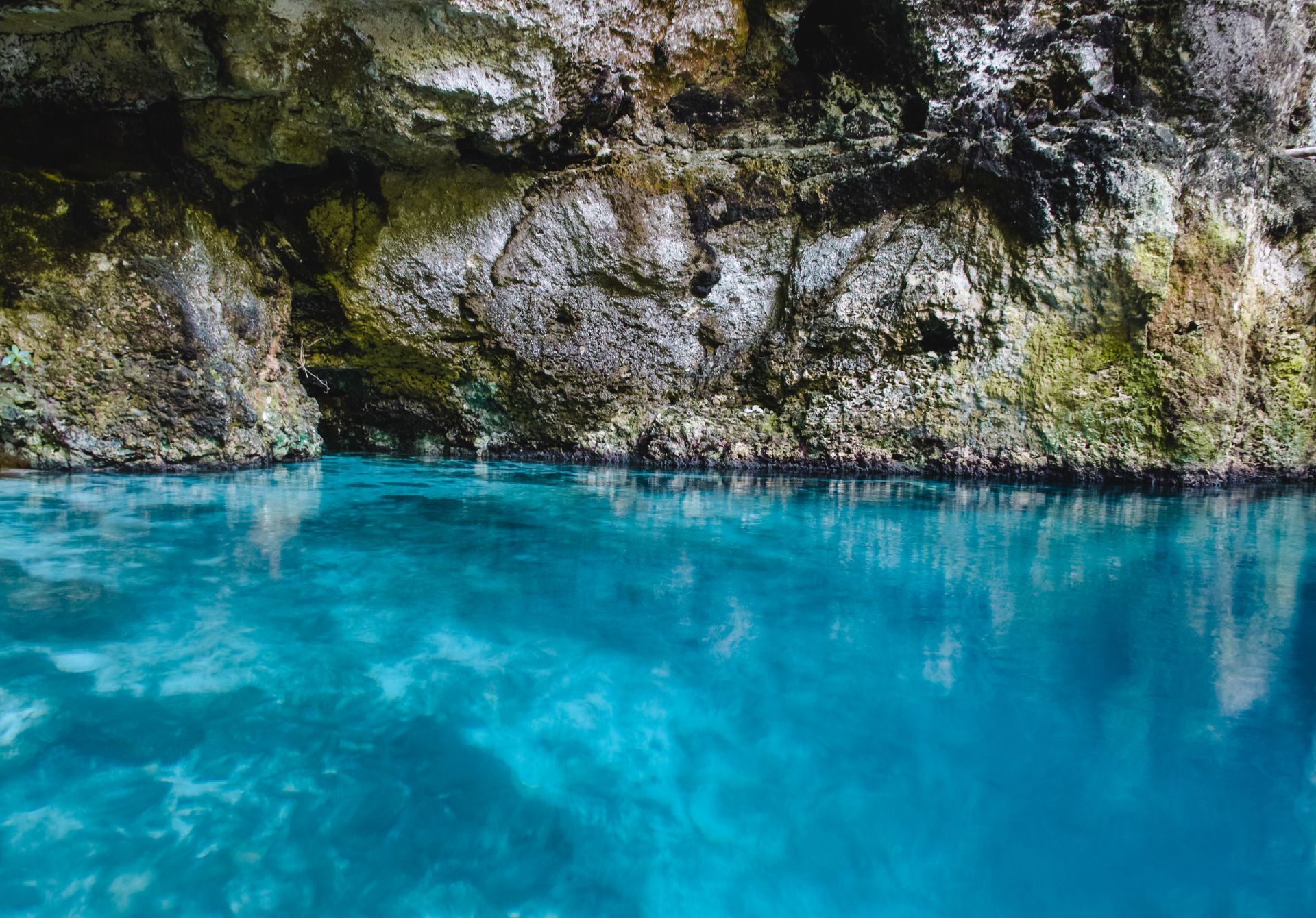Nestled within the ecological reserve of Scape Park in Punta Cana, Dominican Republic, Hoyo Azul stands as one of the Caribbean’s most mesmerizing natural wonders. This pristine cenote, whose name literally translates to “Blue Hole,” has become an increasingly popular destination for travelers seeking both adventure and natural beauty.
Geological Formation and Natural History
Hoyo Azul was formed over millions of years through the gradual dissolution of limestone bedrock. This natural process created a sinkhole filled with crystal-clear freshwater, reaching depths of over 75 feet (23 meters). The distinctive blue color that gives the cenote its name comes from the combination of mineral content, depth, and the way sunlight interacts with the water.
Location and Accessibility
Located at the base of a 75-foot limestone cliff in Cap Cana, Hoyo Azul is approximately 15 minutes from Punta Cana International Airport. The cenote is accessible through Scape Park, which provides guided tours and necessary safety equipment. Visitors must traverse a well-maintained eco-trail and descend a series of wooden stairs to reach the swimming area.
Best Time to Visit
The optimal time to visit Hoyo Azul is during the early morning hours (8:00 AM – 10:00 AM) when the sunlight creates stunning reflections on the water’s surface and before the larger tour groups arrive. The dry season (December to April) typically offers the best visibility and most comfortable conditions.
Activities and Experiences
The primary activities at Hoyo Azul include:
- Swimming in the crystal-clear waters
- Photography opportunities
- Guided ecological tours
- Zip-lining adventures (as part of combined tour packages)
Environmental Significance
Hoyo Azul plays a crucial role in the local ecosystem, serving as a natural aquifer and supporting various endemic species. The surrounding ecological reserve is home to diverse flora and fauna, including several species of birds, reptiles, and native plants. Conservation efforts are ongoing to preserve this natural wonder for future generations.
Cultural Impact and Local Significance
For local communities, Hoyo Azul holds both cultural and economic significance. Traditional Taíno people considered cenotes sacred places, and many local legends surround the formation of this natural pool. Today, it serves as a vital source of tourism revenue, providing employment opportunities for local guides, photographers, and service staff.
Practical Information for Visitors
What to Bring
- Biodegradable sunscreen (regular sunscreen is prohibited to protect the ecosystem)
- Water shoes or sturdy sandals
- Quick-dry clothing
- Waterproof camera
- Small towel
Conservation Guidelines
Visitors are required to follow strict conservation guidelines, including:
- No touching of cave walls or formations
- Proper disposal of waste
- Use of designated swimming areas only
- Adherence to guide instructions
Hoyo Azul represents more than just a tourist attraction; it’s a testament to the natural beauty and geological processes that have shaped the Dominican Republic. This remarkable cenote combines adventure, natural history, and cultural significance in a single destination. As visitors continue to discover this hidden gem, the importance of sustainable tourism practices becomes increasingly crucial for preserving its pristine condition for future generations.
Whether you’re a nature enthusiast, adventure seeker, or simply looking to experience one of the Caribbean’s most spectacular natural formations, Hoyo Azul offers an unforgettable experience that showcases the best of Punta Cana’s natural heritage. The combination of crystal-clear waters, rich biodiversity, and careful preservation efforts makes it a must-visit destination for any traveler to the Dominican Republic.

